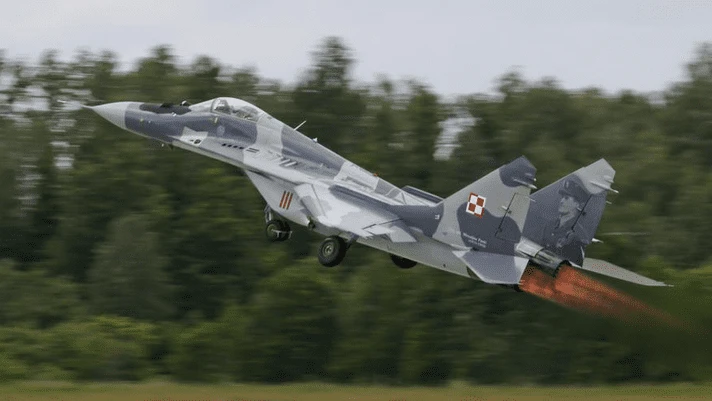Polish MiG-29 Fighter Aircraft Back in the Air

Polish Air Force’s MiG-29 fighter aircraft return to flying, following a 4 months break, caused by a tragic and fatal crash of the fighter that took place on 6th July 2018. The jets’ return to service is a result of implementation of the preventative measures recommended by the Polish military aircraft accident investigation body (Komisja Badania Wypadków Lotniczych Lotnictwa Państwowego – KBWLLP).
According to the information released by the Polish Press Agency on 31st October 2018, the spokesman of the General Command of the Armed Forces, Czesław Cichy, KBWLLP has not released information on finalization of investigation concerning the tragic MiG-29 crash that took place on 6th July. However, the General Command of the Armed Forces received prophylactic recommendations made by the Commission, the implementation of which makes it possible to have the jets flying again.
The Airspace Use Plan published by the Polish Air Navigation Services Agency suggests that the area located close to the 23rd Tactical Airbase was going to be used by the MiG-29 aircraft to conduct flights. Even though the morning take offs yesterday were impossible, the inclusion of the jets in the AUP suggests that the recommendations made by KBWLLP have been already implemented and the aircraft may return to flying.
This is especially important as grounding of the jets stationed at the 22nd and 23rd Tactical Airbases seriously impaired the operational capabilities of the Armed Forces and also posed a threat for maintaining a continuous training of the crews. After the previous accident, the MiG-29 aircraft were not flying for a month. On 18th December one of the jets crashed in Minsk Mazowiecki. The pilot, despite the lack of ejection, managed to survive the crash. The ban on flying was in force from the date of the accident until 8th January. After another 6 months a jet from Malbork crashed, unfortunately the pilot also did not eject.
Thus, MiGs’ return has been expected, but it needs to be treated with a reserved approach. This should be even more concerning as the KBWLLP, which is the Polish military aircraft accident investigation unit, did not announce the results of the proceedings concerning the two accidents. Neither do we have knowledge of the official causes of these events, nor do we know the conclusions reached, within the context of further operational use of these Russian-made aircraft.
MiG-29 jets operated by the Polish Air Force are quite obsolete and their lifecycles have been seriously depleted, despite them being partially modernized. The original timeline of operational use of the Fulcrum has already ended quite some time ago. At the moment Poland is one of the last users of those jets among the NATO member states. Considering the Slovak decision to acquire the F-16 Block 70, as well as the tendering procedure launched in Bulgaria to replace the Fulcrums, Poland remains the only NATO Eastern Flank nation that has not replaced but also that has not even selected the potential replacement. The Harpia programme the goal of which is to select the replacement of the Su-22 and MiG-29 aircraft has been in the analytical-conceptual phase since last year.
